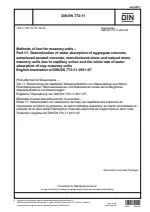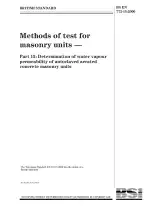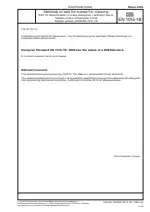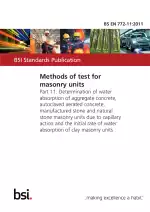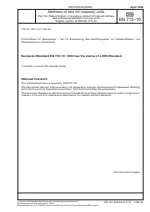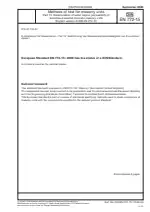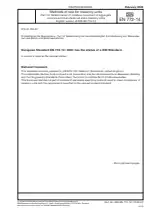Methods of Test for Masonry Units - Part 11: Determination of Water Absorption of Aggregate Concrete, Autoclaved Aerated Concrete, Manufactured Stone and Natural Stone Masonry Units Due to Capillary Action and the Initial Rate of Water Absorption of Clay Masonry Units
Also Known As:
DIN EN 772-11 is a standard that provides a specific testing method for determining the water absorption characteristics of various types of masonry units. The standard covers different materials such as aggregate concrete, autoclaved aerated concrete, natural stone, manufactured stone, and clay masonry units.
The first part of the standard focuses on the determination of the water absorption coefficient due to capillary action. Water absorption through capillary action is an important property to consider as it can affect the performance and durability of masonry units. This coefficient provides information on how much water a unit can absorb through capillary action over a specific period of time.
The second part of the standard deals with the initial rate of water absorption for clay masonry units. The initial rate of water absorption is the amount of water a clay masonry unit can take up within a specific time frame. This property is crucial in assessing the ability of clay masonry units to resist water penetration, which can be essential for maintaining the structural integrity and functionality of a building.
| Descriptors | Bricks, Brickwork, Capillary, Cast stone, Concrete blocks, Concretes, Construction, Construction materials, Determination, Effects, Masonry, Mathematical calculations, Natural stones, Specification, Testing, Testing devices, Water absorption, Checking equipment |
| ICS Codes | 91.100.15 - Mineral materials and products 91.100.30 - Concrete and concrete products |
| Language(s) | English |
| File Size | 440.3 KB |

